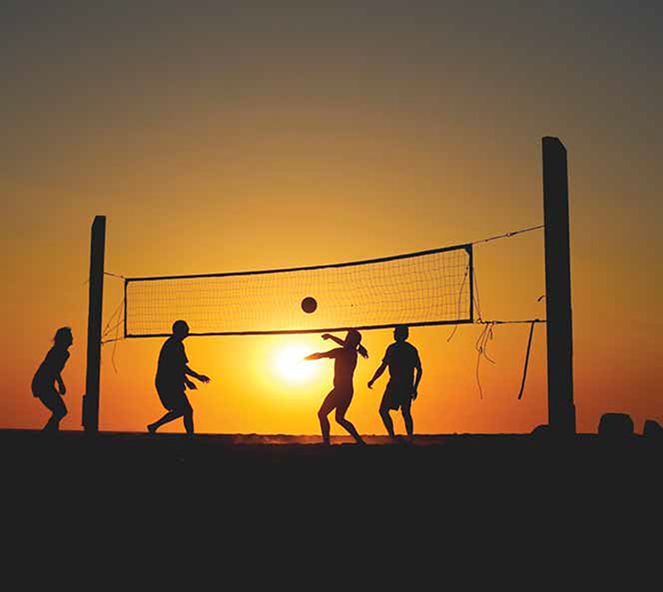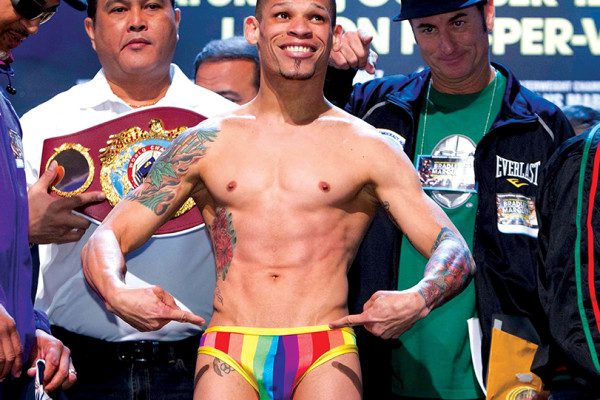In the surreal world of the category called ‘other sports’, Shamya Dasgupta witnesses some hard ironies.
Let’s first sketch the stereotype.
Humble, unprivileged background. Mother, usually homebound with many children to bring up. Father, possibly employed in a labour-intensive sector, or in one of the lower rungs of a government setup. Education: often none at all, sometimes only the basic grades before financial concerns take precedence over school.
Of the few paths that lie ahead of this youngster, a promising one leads to the wide world of Indian sports. A world of startling dichotomies, baffling priorities and, at the same time, incredible opportunities.
Let’s assume for the sake of simplicity that our protagonist is male. Or, when his journey starts, a boy.
Let’s assume he isn’t criminally inclined, nor academically. But, because of the circumstances, he is tougher than his counterpart in, say, a south Delhi bungalow. Nothing has come easy to this boy so far and he knows nothing will come easy in the future either.
He moves well, plays a mean game of whatever sport is popular in his village or town. A well-meaning neighbourhood uncle notices this and informs his father that he could try his hand at a sport. Or the boy gets a similar idea from one of the older kids in the neighbourhood. What sport? Not cricket – Sachin Tendulkar and MS Dhoni seem so distant, so untouchable. Not tennis or golf or badminton, obviously.
Then what?
‘Other sports’ is a bizarre unofficial category that probably exists only in India. It encompasses all sorts of disciplines that the sophisticates don’t play or watch. Not shooting or fencing – those are for the elite, unless one is in the army. But the more bare bones disciplines: boxing, wrestling, running, jumping, hockey, weightlifting, etc. If someone from his village has gone on to do well in a certain sport, our young man is probably already interested in it. But interest in the sport is not key; he has to be invested in having a future. A monthly salary, possibly a government quarter to live in and the opportunity to make a name for himself.
Our hero will choose a sport depending on what’s current in his part of the country and find his way – through the many government schemes that exist – to the nearest Sports Authority of India centre. If he does well there, he can move to the next step. And then one step further, and further, till he can be, if he hasn’t given up along the way, among the best in that sport in India. He has, by this stage, won a couple of medals at national-level competitions, travelled abroad somewhere representing our country and, of course, he has a blue tracksuit with ‘India’ emblazoned in bold white lettering in the back.
If he does, he has arrived.
Now, chances are that he won’t really go much farther and, more importantly, he might not even want to. That job and that quarter are both in the bag already, after all.
Any Indian sports journalist who has spent a little while ‘on the field’ has met a number of these athletes. They don’t strike you as particularly remarkable. Just ordinary youngsters – boys and girls – with their attire being the only differentiator from others their age.
Do they have a story? Have they won something major? Is one of them the child of someone from a red light area? Something that sets them apart, like Santhi Soundarajan? Yes? No? Not interested then; all the best. But what do you, the cynical sports journalist who’s seen too much, do when you spend hours just sitting and watching these athletes? When you don’t just dip in, get a quote or a sound bite and leave?
Strangely, it’s in the voices of these also-rans that you sense satisfaction and gratitude, not in the ones that have a shot at glory. Satisfaction because of a job well done. Gratitude to the system that has given them an opportunity to raise themselves. You sense pride. You see it in their eyes, their body language. You detect it in their unselfconscious laughter.
All my previous trips to the National Institute of Sports in Patiala were with specific stories in mind. An athlete or a coach to interview prior to the Olympic Games or an official to meet because a group of athletes had been caught in a drug bust and the like. But last year, I visited while working on a book on Indian boxing. Yes, I had people to meet, but I was in no hurry. I needed to watch the boxers, and understand them. In the process, I ended up speaking to a number of other athletes as well, including those training in a discipline I had no idea existed – and I’m sorry to say the name of it escapes me now.
Some of them were going to be part of the Indian contingent for the London Olympics (in 2012), but that was only about 30 per cent of the athletes I met, and probably fewer than five per cent of the total number of athletes at the institute, which functions out of the sprawling Moti Bagh Palace once owned by the royal family of Patiala. Some relics of the palace’s glory have been left alone – though in various stages of disrepair – but most of the training happens in newer constructions. When not training, boys and girls hang around, much like they would in any college or university. Loafing, chatting, walking, romancing …
Are all of them national-level medal winners? No, certainly not at the senior level.
Are they all young, in their teens, with the potential of making it big someday? Not quite.
Are they all close to national selection then? No.
The recurring theme in their stories is this: Naukri. Job. Sure, who doesn’t want to be a world champion, but these youngsters don’t go that extra mile, because they want to stay fit and earn their salaries. They want to give their families the assurance of a better life.
Youngsters from Manipur and Mizoram, Jharkhand and West Bengal, Andhra Pradesh and Karnataka, Punjab and Haryana, Maharashtra and Rajasthan; they have jobs in government departments, the railways, the police, the armed forces. A gold medal is great, but the paycheque at the end of every month is better. From where they come, dreaming big is only for the exceptionally talented – the Sushil Kumars and Mary Koms and Vijender Singhs. For the rest, it’s enough to be regarded as national-level athletes.
The hunger dies when this, the biggest, objective is achieved. Any world champion or medal winner at a major international event will tell you stories about their sacrifices, their obsessive chase of glory – that is what they want above all. For the people we are talking about here, it’s not.
Strangely, it’s in the voices of these also-rans that you sense satisfaction and gratitude, not in the ones that have a shot at glory. Satisfaction because of a job well done. Gratitude to the system that has given them an opportunity to raise themselves. You sense pride. You see it in their eyes, their body language. You detect it in their unselfconscious laughter. One of them tells you in as many words: “I became a sportsperson to get a job in the railways; now my family is proud of me. They are happy that I chose to become a sportsperson instead of doing odd jobs in the village.”
Later, I would quote Akhil Kumar, the top Indian boxer, in my book, saying, “If any young boxer tells you that they have become boxers to bring glory to the nation, they are lying. It’s not that we are not educated, but being from rural parts of Haryana, we can’t be too ambitious. We only think of getting jobs. And the easiest way to get one of these jobs, at least in Haryana, is through the sports quotas.”
But the cynic won’t stay down. The sports ministry and the different federations don’t exist to change people’s lives. They exist to make India a stronger sporting nation. What happens to that? Do we continue to parrot forever the line about how an athlete has“won despite the system, not because of it”?
The fact, though, is that you can’t blame the athletes who are easily satisfied because they have never pretended to be interested in anything other than a job. You can’t really blame the authorities beyond a point, because they can only give opportunities; they can’t create champions. What are they supposed to do? Bioengineer? India does not have a culture of sport, like, say, Australia does, and our democracy (such as it is) is too robust for a China-like perform-or-perish sports setup. We do not have the level of infrastructural investment it would take to boost every sport. Do you blame the people with the money for putting it all into cricket and a few select other sports and not into, say, weightlifting? I’d like them to invest in all these sports, but I wonder what I would have done if I was the one with the money.
It’s a cycle of inferiority –one that ensures India will not be a great sporting nation, but one that will occasionally throw up individuals that we can celebrate.
But then again, why grudge the system if all concerned are getting what they want? Why does India have to be a great sporting nation? If sports can change the lives of a few thousands, is that such a small feat?


